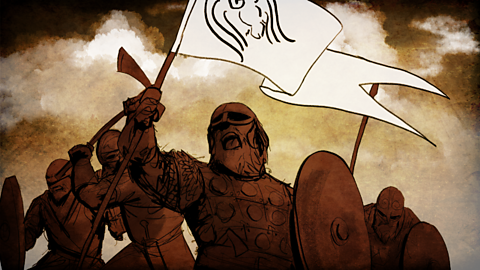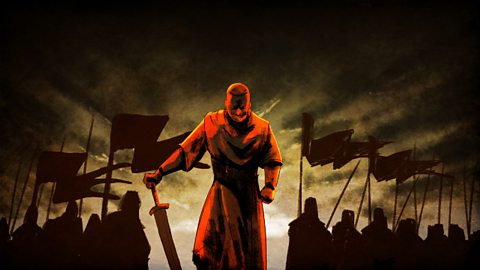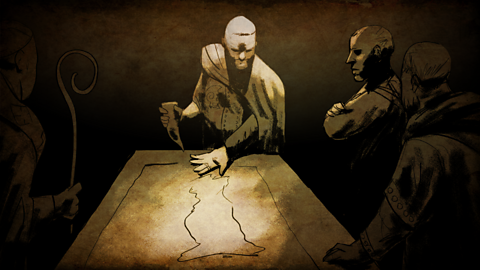Video summary
An exploration of Anglo-Saxon resistance to Norman rule after William's coronation on Christmas Day in 1066.
Edwin and Morcar were serial offenders, yet each time seem to receive a Royal pardon.
William was particularly severe in putting down a rebellion in the North of England.
Perhaps the most determined rebellion was led by Hereward the Wake, supported by some Danish invaders, in the Fens of East Anglia in 1070 -1071 but even that, too, is defeated by William, with the help of a wooden tower, a witch and some monks.
Teacher Notes
Key Stage 3:
Students could research and then discuss why were there so many rebellions against William? Which was the most serious from William's point of view and how successfully did William deal with rebellions?
Key Stage 4:
Hold a class debate with the title, 'How successful a king was William?'
- What did people at the time expect of a king?
- Did William deliver?
- Did everyone in England accept William as their king?
- Does everyone in your class agree about William?
This clip will be relevant for teaching History in secondary schools in the UK. This topic appears in OCR, Edexcel, AQA, WJEC KS4/GCSE in England and Wales, CCEA GCSE in Northern Ireland and SQA National 4/5 in Scotland.
1066: The claimants to the throne (1/6) video
Edward the Confessor died in January 1066 without a son or heir. Who would be chosen to be king?

1066: The Battle of Fulford (2/6) video
In the first major battle of 1066, the Viking king of Norway, and Harold Godwinson's own brother Tostig, invade the north of England.

1066: The Battle of Stamford Bridge (3/6) video
The Battle of Stamford Bridge was the second major battle in the fight for the throne in 1066 and two of the four contenders were killed.

1066: The Battle of Hastings (4/6) video
William of Normandy arrives in Sussex for the decisive battle of the Norman Conquest.

1066: King William and Domesday Book (5/6) video
How William the Conqueror secured control over England.

Ěý